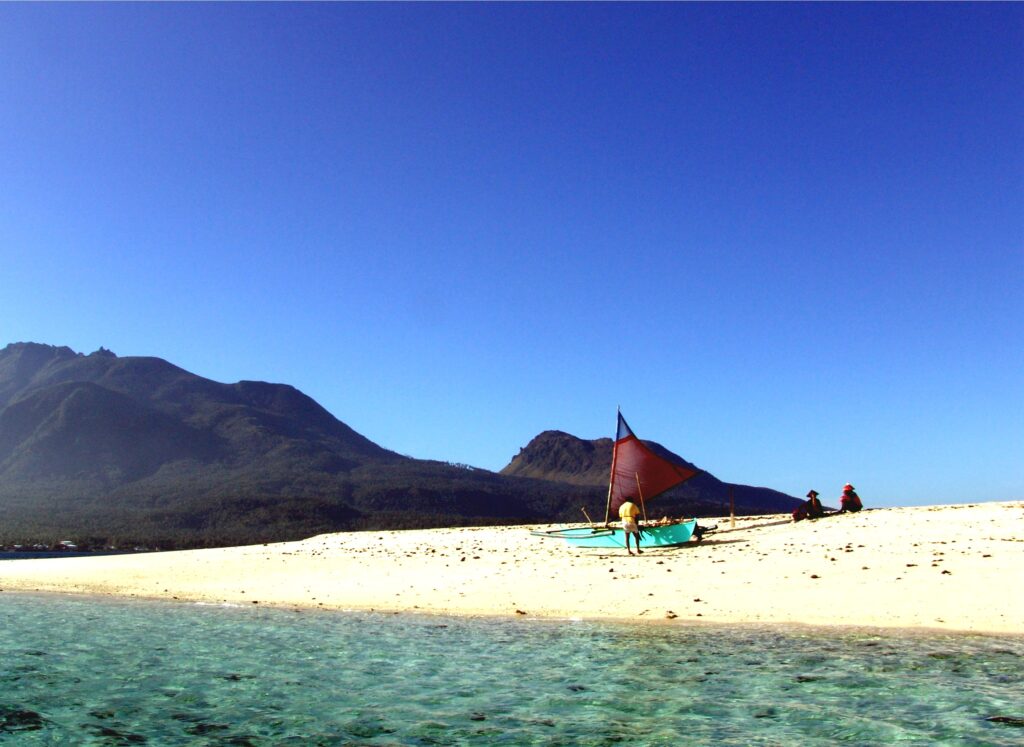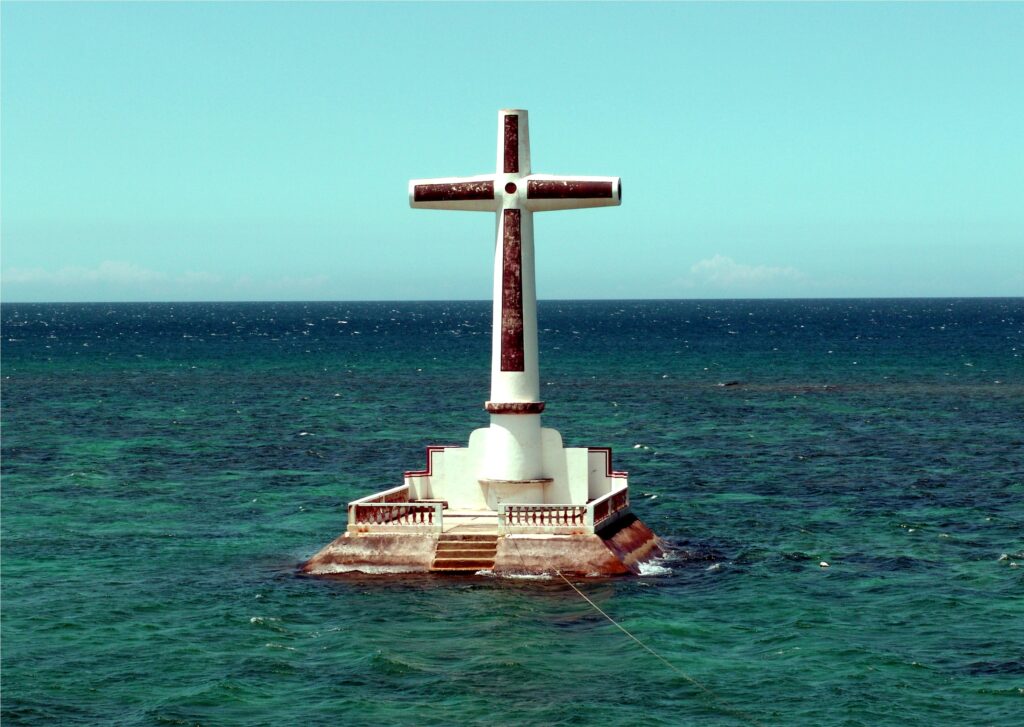By Henrylito D. Tacio
Photos by Paolo R. Lim
“A remote, unspoiled paradise” is how All-Asia Travel Guide describes Camiguin, an island-province approximately 90 kilometers north of Cagayan de Oro City.
The province is literally “born of fire” as it has more volcanoes than municipalities. Camiguin has only five municipalities (Catarman, Guinisiliban, Mahinog, Mambajao, and Sagay). Still, it has seven volcanoes (Mount Vulcan Daan, Mount Mambajao, Mount Karling, Mount Uhay, Guinisiliban Peak, Tres Marias Mountain, and Mount Hibok-Hibok). Not surprisingly, though, it has earned the distinction of having the most number of volcanoes per square kilometer than any other island on earth (it has a total land area of 238 square kilometers).
This tiny island has a lot of attractions, ranging from green forests and mythical volcanoes to eternal hot and cold natural springs, from pristine patches of black and white beaches to majestic waterfalls and exotic marine life, from blue-ridge mountains to serene surroundings.
Going around the island’s 64-kilometer circumferential road on a motorbike is sheer fun – and highly recommended by locals. Motorbikes may be rented at reasonable prices in the capital town of Mambajao.

History:
The name “Camiguin” is derived from the native word kamagong, a tree of the Ebony family that thrives near Lake Mainit in Surigao del Norte. The original inhabitants of Camiguin were Manobos, who migrated from Surigao. The old native language in Camiguin is called “Kinamiguin,” which is similar to the dialect spoken in Surigao.
Fast facts:
Camiguin has the no. 7 top diving spot in the world.
The province is famous for its craftworks. Blessed with natural artistry and an abundance of a variety of handicraft materials, the people have long been making baskets, pottery, metal works, and other products.
Camiguin is known for two activities: Lanzones Festival and Panaad. Lanzones Festival – in honor of the tropical fruit that grows profusely on the island – is celebrated every year in October with a weekend of street dancing, parade, and pageants in the town of Mambajao.
During Holy Week, religious devotees from all over Mindanao and the Visayas go around the island on foot for two days and nights as part of Panaad (literally means “promise”). In climbing up the mountain, they go through each of the life-size statues depicting the 14 stations of the crucifixion of Jesus Christ, which are interspaced from each other.
Points of interest:
Katibawasan Falls – Some five kilometers southeast of Mambajao at the foot of Mount Timpoong. The falls tumble down into a green pool, ideal for a refreshing swim. Giant ferns decorate the surrounding land, carpeting for space with giant trees and dropping vines.
Tuasan Falls – Located six kilometers northeast of Catarman. The pool below the waterfalls is deep and clear. The surrounding scenery is unspoiled and perfect for a peaceful picnic; the only sounds around you is that of the tumbling falls and running water.
Bura soda water swimming pool – It’s only here where you can swim to a pool of soda water. It has incredible scenery over the fields, and the seas as its cold water provide a refreshing splash to bathers and picnickers. Located in Bura, Catarman.
Ardent hot springs – A government-run resort located at the foot of Mount Hibok-Hibok. The place has a four-tiered pool of varying depths and warmth. The ideal time for swimming is early morning or late afternoon.
Tangub hot springs – Located 12 kilometers west of Mambajao, it is a volcanic hot spring below the sea bed. The small area is formed by a pool of sea stones and corals and is completely undeveloped. Water temperatures turn from cold to lukewarm, warm and hot as the tide changes.
Sto. Nino cold spring – Located four kilometers north uphill of Catarman proper, it has a pool measuring 25 meters by 40 meters and 1/2 meter deep of cold spring water sprouting from its sandy bottom.
Santo Rosario Church – An old church that was built in 1882 that is found in Sagay.
The sunken cemetery – Marked by a large white cross, this has superb sunsets and the ideal place for snorkeling and diving.

Ruins of San Roque Church – Located in Gui-ob, Bonbon, Catarman, this church was ruined by the eruption of Old Vulcan Daan in 1871. It is a monument with thick century-old walls, belfry, and convent, which stand reminiscent of the second Spanish settlement established in 1697.
Mount Hibok-Hibok – The only active volcano in the island and has a 1,250-meter slope. A crater lake and stream serve as outlets in many places at the peak, and a clear view of the entire island and Bohol beyond can be seen on clear days.
White Island – Also known as Medan Island, it is located two kilometers across from the beaches of Agohay and Yumbing. Aside from the fact that the island is purely white sands, it also vanishes during high tides. Going to the island in the afternoon it is not advisable as there are no trees around. Good for sunbathing and snorkeling.
Mantigue Island – This island, located three kilometers offshore across from Hubangon and San Roque in Mahinog, is only four hectares with evergreen forest, fringed with white granule sand beaches. A fishing village is found in the north of the island. One side of the island is a white sand beach with coral offshore, and the other opposite side provides a deep drop-off for snorkeling and diving.
Taguines Lagoon – Located at Benoni, Mahinog. This is a man-made lagoon mantled by limpid water, a large cliff, and gently rolling hills. The brackish water is engulfed in there by a century-old crater, ideal for boat and fishing.
How to get there:
Camiguin is accessible by air and sea from Cebu City, but trips are limited only. Most fly into Cagayan de Oro City, which is 84 kilometers away from the port of Balingoan.
For those who would like to take their own vehicles to Camiguin, some of the ferryboats at Balingoan Port can transport cars, pick-ups, vans, and even large trucks to the Benoni Port. However, a number of fees have to be paid to transport these vehicles.

